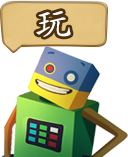
Have you ever encountered the phrase embedded system? An embedded system is a combination of hardware and software that is designed for a specific function. Embedded systems don’t have to be industrial. You can see embedded systems all over your house or office. Industrial machines, automotive systems, medical equipment, home appliances, and even toys are all examples of embedded systems. Many embedded systems have user interfaces, particularly friendly user interfaces.
User interfaces are the way through which a user interacts with an embedded system.
The system’s design dictates how the interaction process works. For example, brake assist systems in cars have no user interaction at all since they work completely autonomously when they operate. On the other hand, smart fridges require many settings that are configured by users to achieve the conditions they deem suitable.
Embedded systems can have a microprocessor, a microcontroller, or both. There is generally a chip at the heart of the product that is carries out computations for real-time operations. It can be difficult to see the difference today between microprocessors and microcontrollers. In theory, a microprocessor is a CPU that requires the addition of other components such as memory. Microcontrollers, on the other hand, are complete computing systems that include not only a CPU, but also memory and peripherals such as RAM or serial communication ports. Microcontrollers tend to be designed for low power consumption so that they can be used to achieve complex tasks safely and without fear of power consumption.
Intel, Texas Instruments, and ARM are among the many main manufacturers of embedded processors. Their clients are Samsung, Apple, and other large names in the tech industry. Embedded systems use operating systems that are designed specifically to suit the purpose they are built to achieve. You can find the Linux operating system running many of these systems. Linux and its variations are the most widely-used operating systems in the embedded market as they are open source and well-maintained. There are other alternatives like Windows Embedded, but those are soon to become obsolete.
Some embedded systems can be simple while others have an extreme amount of complexity like in the case of drones, where system capabilities must go beyond what a human could provide. Drones must integrate sensor data and act upon that information faster than a human could. As for programming languages affiliated with the development of embedded systems, C languages are the main and the most widely used. The C family of languages is followed closely in popularity by Python and Java.
Embedded systems, like many other applications today, require an understanding of how to program before you can dive further into the field. Begin your learning journey with RoboGarden now and register for free.
